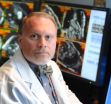(Press-News.org) AUGUSTA, Ga. – While it's leveling off, a decade of increased use of sophisticated, expensive, imaging studies has put radiologists and their specialty front and center in health care reform, says the chair of an academic radiology department.
That seemingly dubious distinction gives radiologists the chance to take a leadership role in reducing costs, optimizing utilization and improving patient care, said Dr. James V. Rawson, Chair of the Medical College of Georgia Department of Radiology at Georgia Health Sciences University.
Rawson and Dr. Ruth Carlos, Professor of Abdominal Radiology at the University of Michigan, are Co-Editors of a special issue of the Journal of the American College of Radiology that provides their colleagues with current information and steps to do just that.
"When you look at the impact of health care reform it very much depends on what hat you are wearing: you may be the patient, you may be the parent, you may be the taxpayer, you may be the employer and all those have different perspectives," said Rawson. Regardless of the hat or the perspective, health care reform is a "game changer."
In the world's most expensive health care system, defensive medicine, inefficient insurance processes and preventable conditions related to obesity account for about one-third of U.S. health expenditures. That cost alone can make up the gap between the percentage of gross domestic product spent on health care in the U.S. compared with other countries, said Rawson, who also authored a paper for the journal on the roots of health care reform.
The non-invasive but expensive imaging tools of radiology are a major player in the practice of defensive medicine. Patient demand for such studies also has increased utilization as has the proliferation of mobile and other non-hospital based imaging. A more positive aspect of the decade of growth is imaging's replacement of exploratory surgical techniques for diagnosing, as an example, internal injuries in the abdomen, Rawson said. And, computerized tomography often can be used to quickly diagnose heart disease in an emergency room patient with chest pain rather than rushing off to a cardiac catheterization lab.
Clinical decision support tools based on best practices that are integrated, as an example, into the electronic medical record system, can help ensure such optimal use of imaging. "The right study gets ordered for the right patient at the right time so there is better health care and more appropriate utilization," Rawson said.
MCG Neuroradiologist Scott Forseen is corresponding author of an article in the journal that puts together these sorts of diagnosis and treatment guidelines for patients with low-back pain that are most likely to benefit from imaging. Overwhelming evidence suggests that high-tech images and back surgeries don't improve outcomes for many but the numbers of both are increasing.
That does not mean cookie cutter medicine, Rawson said. "There are other things that are not standardized workups and require judgment every step of the way but you reach a point in physician decision making where there is a common pathway you should follow."
Rawson is one of a dozen members of the American College of Radiology's Harvey L. Neiman Health Policy Institute examining the role of radiology in new health care delivery and payment models.
INFORMATION:
Radiology is front and center in health care reform
2012-10-01
ELSE PRESS RELEASES FROM THIS DATE:
Tobacco contains highly toxic compounds not regulated by law
2012-10-01
Researchers from the University of Alicante (Spain) have analysed ten brands of cigarettes and found that the concentrations of certain harmful and carcinogenic substances vary significantly from one brand to another. Until now legislation has not covered these compounds and only establishes limits for nicotine, tar and carbon monoxide. Scientists have also developed catalysts to reduce the harmful products in tobacco.
In accordance with current legislation, cigarette packets indicate the nicotine, tar and carbon monoxide concentrations in order to confirm that these ...
Camels give President Obama's Alzheimer's plan a lift
2012-10-01
Bethesda, MD—President Obama's national plan to fight Alzheimer's disease just got a lift thanks to a team of international researchers whose recent discovery may lead to enhanced imaging of and improved drug delivery to the brain. A research report appearing in The FASEB Journal, describes an entirely new class of antibody discovered in camelids (camels, dromedaries, llamas, and alpacas) that is able to cross the blood-brain barrier, diffuse into brain tissue, and reach specific targets. Having such antibodies, which are naturally available, may be part of a "game changer" ...
Therapeutic time window important factor for cord blood cell transplantation after stoke
2012-10-01
Putnam Valley, NY. (Oct. 1, 2012) – A research team from Germany has found that optimal benefit and functional improvement for ischemic stroke results when human umbilical cord blood mononuclear cells (hUCB MNCs) are transplanted into rat stroke models within 72 hours of the stroke.
Their study is published in the current issue of Cell Transplantation (21:6), now freely available on-line at: http://www.ingentaconnect.com/content/cog/ct/.
"Ischemic stroke is one of the most frequent causes of death and the most common reason for permanent disabilities in adults in ...
MRI images transplanted islet cells with help of positively charged nanoparticles
2012-10-01
Tampa, Fla. (Oct. 1, 2012) – In a study to investigate the detection by MRI of six kinds of positively-charged magnetic iron oxide nanoparticles designed to help monitor transplanted islet cells, a team of Japanese researchers found that the charged nanoparticles they developed transduced into cells and could be visualized by MRI while three kinds of commercially available nanoparticles used for controls could not.
The study is published in a recent special issue of Cell Medicine [3(1)], now freely available on-line at: http://www.ingentaconnect.com/content/cog/cm.
"Our ...
Low birth weight may increase risk for cardiovascular disease, kidney disease and diabetes
2012-10-01
Bethesda, MD— Being underweight at birth may have consequences above and beyond the known short-term effects says a research report published in the October 2012 issue of The FASEB Journal. The report shows that rats with a low birth weight have an increased long-term risk for developing cardiovascular disease, kidney disease, and diabetes. What's more, older females are at higher risk of developing high blood pressure before and during pregnancy, which in turn, may restrict growth in the womb, putting offspring at risk for being born at a low birth weight.
"Ensuring ...
Biological markers increase clinical trial success rate of new breast cancer drugs
2012-10-01
Using biological markers--genetic characteristics that are associated with some patients with breast cancer--can increase the success rate of clinical trials for breast cancer drugs by almost 50 per cent, says new research from the University of Toronto Mississauga.
"It's been increasingly difficult for pharmaceutical companies to bring new drugs to market," says Jayson Parker, a faculty member in the Department of Biology and medical biotechnology analyst at the University of Toronto. "On average, about 80 per cent of drugs fail at some point in the clinical trial process."
There ...
Genetically engineered immune system fights melanoma
2012-10-01
MAYWOOD, Il. - Loyola University Medical Center has launched the first clinical trial in the Midwest of an experimental melanoma treatment that genetically engineers a patient's immune system to fight the deadly cancer.
A batch of the immune system's killer T cells will be removed from the patient and genetically modified in a Loyola lab. Two genes will be inserted into the T cells so that they will recognize tumor cells as abnormal.
The patient will undergo high-dose chemotherapy to kill most of his or her remaining T cells. This will make room for the genetically modified ...
AGU journal highlights -- 1 October 2012
2012-10-01
The following highlights summarize research papers that have been recently
published in Geophysical Research Letters (GRL), Journal of Geophysical
Research - Solid Earth (JGR-B), Journal of Geophysical Research - Oceans
(JGR-C), and Water Resources Research (WRR).
In this release:
1. The pros and cons of trading water: A case study in Australia
2. Linking typhoon tracks with rainfall patterns and flood timing
3. Novel observations of currents and drag generated by a tsunami
4. More water stored along major rivers during El Nino years
5. Model suggests Earth ...
New insights on control of pituitary hormone outside of brain has implications for breast cancer
2012-10-01
PHILADELPHIA - The hormone prolactin is produced by the pituitary gland in the brain and then travels via the bloodstream to cells throughout the body, where it exerts multiple reproductive and metabolic effects, most notably on the breast where it is the master regulator of lactation. In recent years researchers have found that prolactin is also produced by some tissues outside the brain, however little is known about the functions of extra-pituitary prolactin or how its production is regulated in these tissues.
Now, the laboratory of Lewis A. Chodosh, MD, PhD, chair ...
Fish getting smaller as the oceans warm: UBC research
2012-10-01
Changes in ocean and climate systems could lead to smaller fish, according to a new study led by fisheries scientists at the University of British Columbia.
The study, published today in the journal Nature Climate Change, provides the first-ever global projection of the potential reduction in the maximum size of fish in a warmer and less-oxygenated ocean.
The researchers used computer modeling to study more than 600 species of fish from oceans around the world and found that the maximum body weight they can reach could decline by 14-20 per cent between years 2000 and ...



